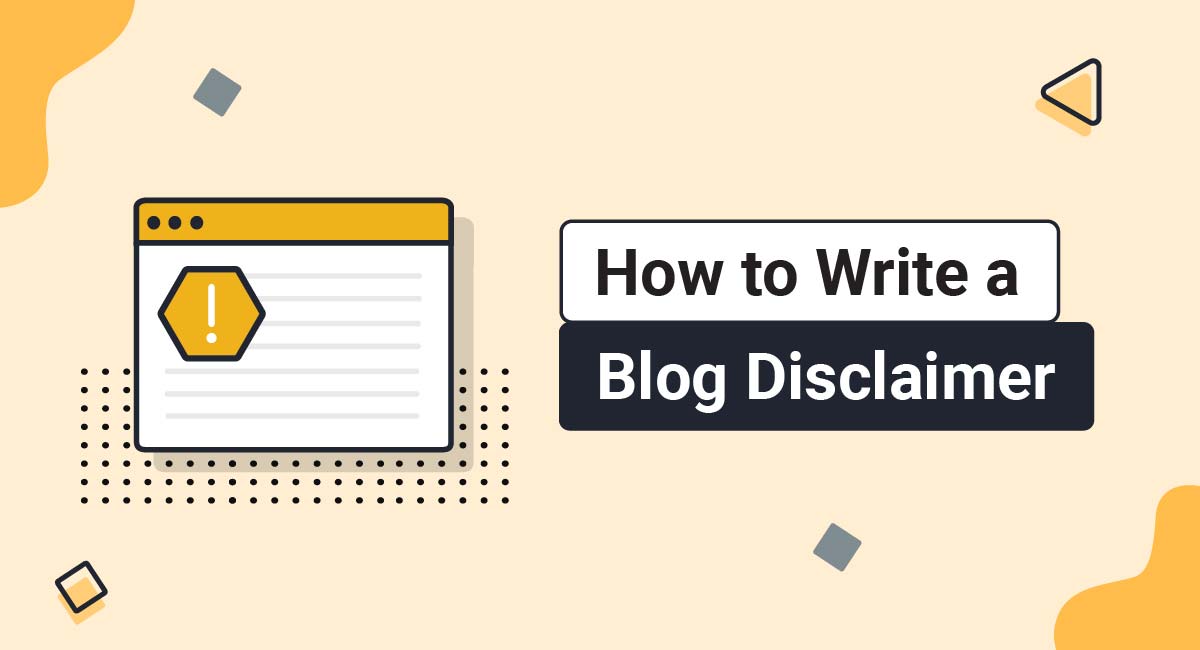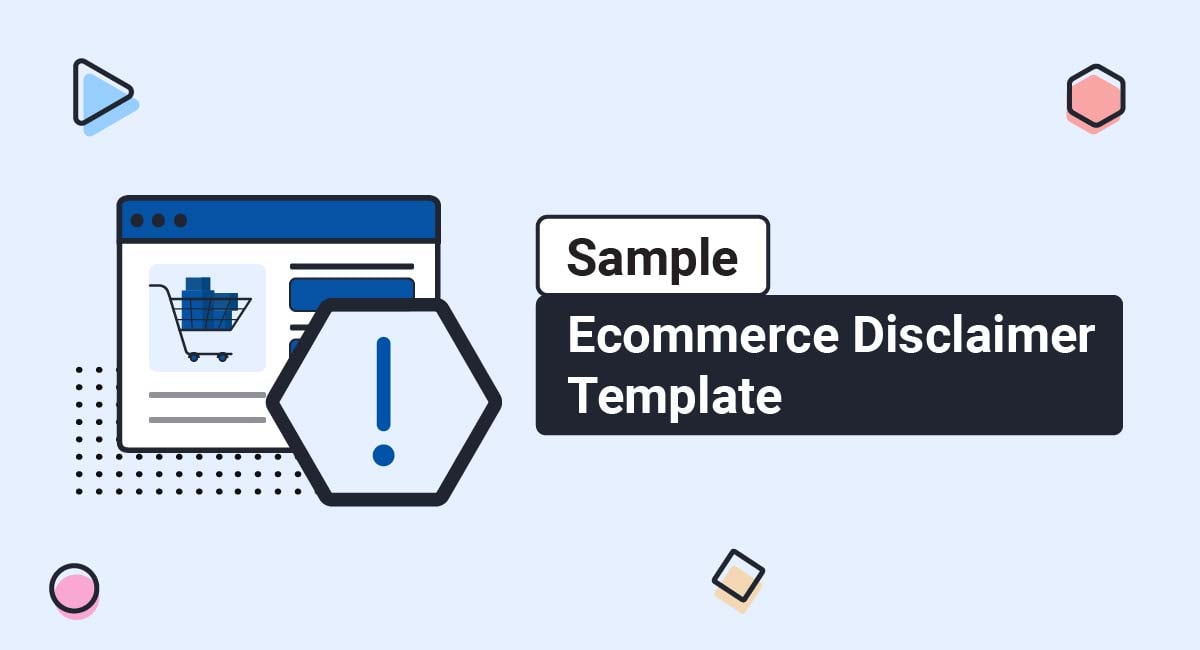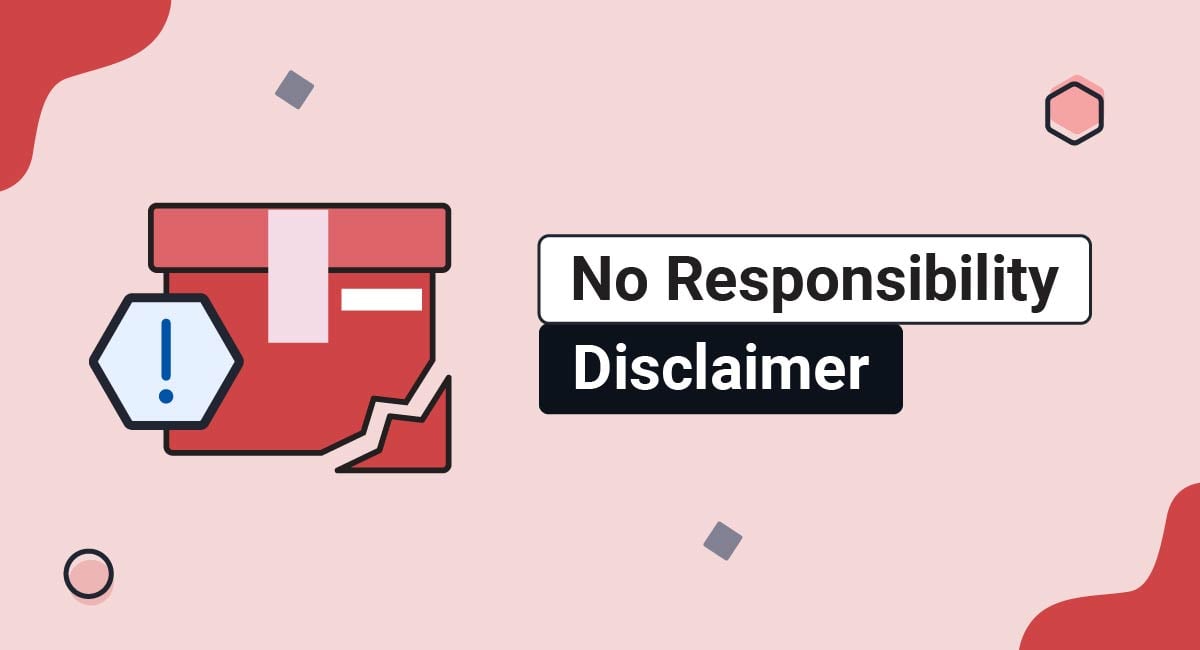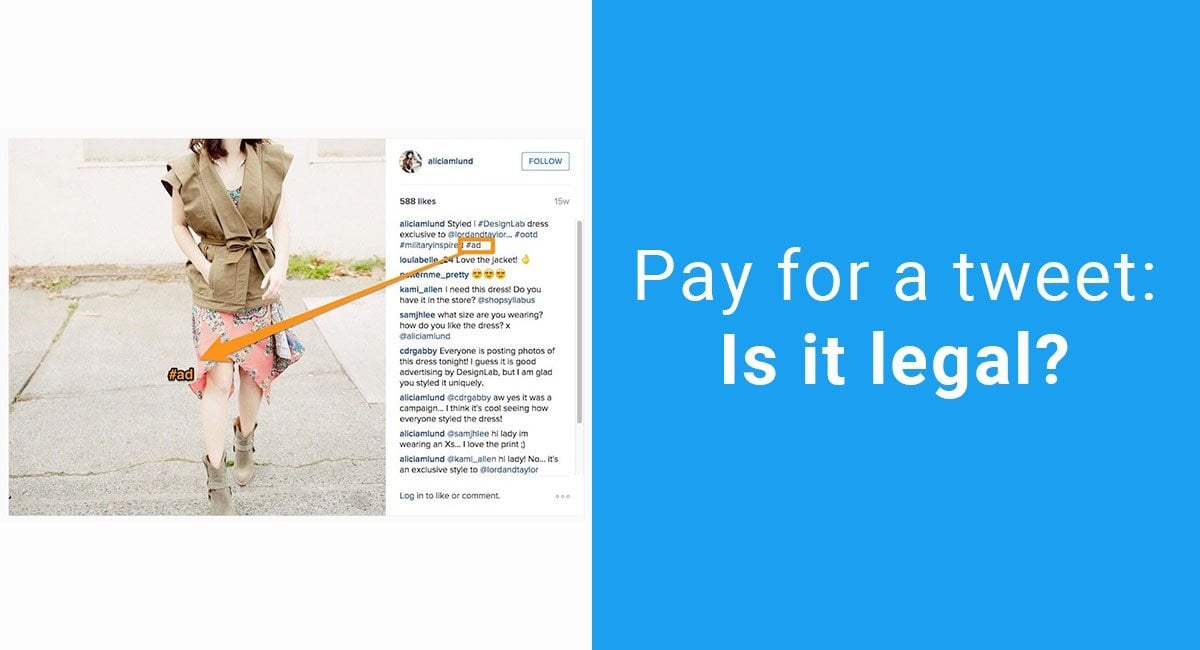A disclaimer is typically a short paragraph that works to protect your business, services, information, physical property and intellectual property from different types of abuses, liabilities and other legal issues.
In other words, a disclaimer will limit your liability to others while protecting your rights.
Writing a disclaimer may sometimes be necessary or legally required, but even if not, it will always be useful.
Our Disclaimer Generator can generate a legal disclaimer for your business, website or mobile app. Just follow these steps:
-
At Step 1, select where your Disclaimer will be used.
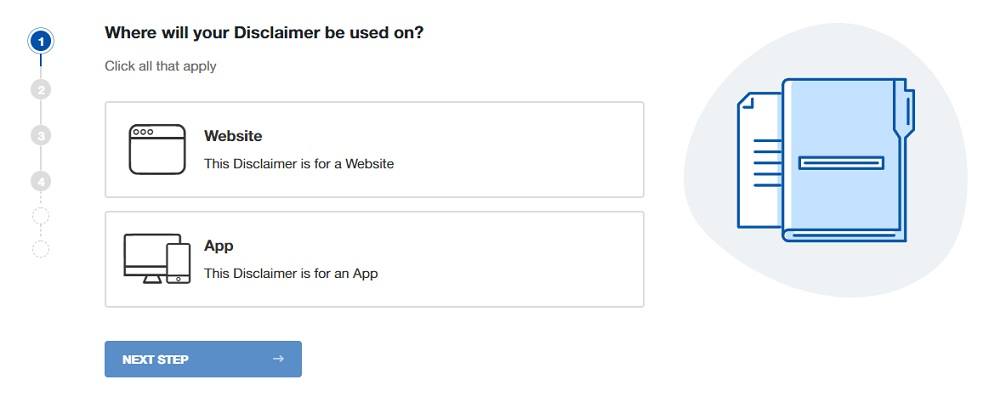
-
At Step 2, add in information about your website/app and business.
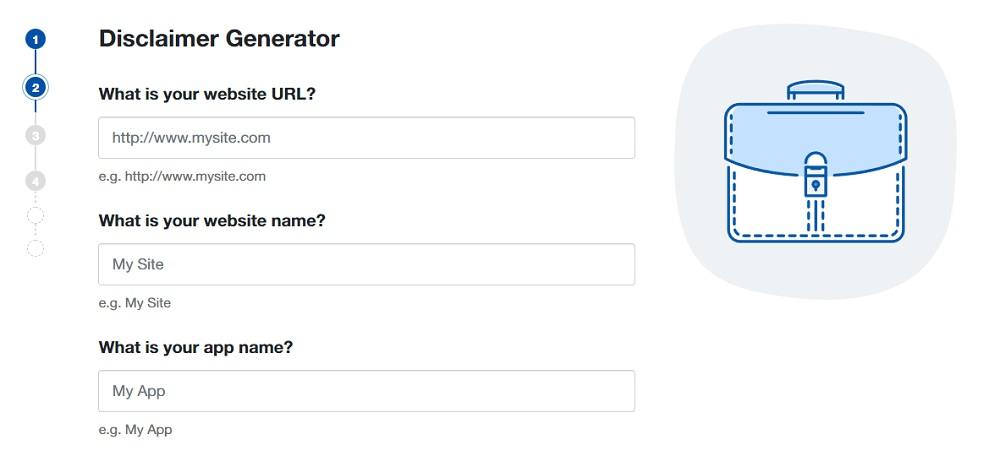
-
Answer some questions about your business practices.
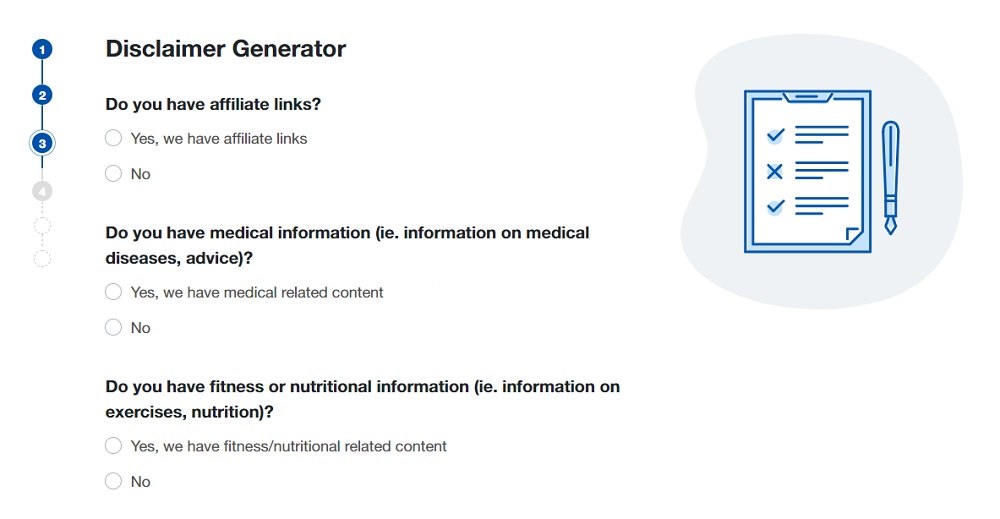
-
Enter an email address where you'd like to receive your Disclaimer and click "Generate."
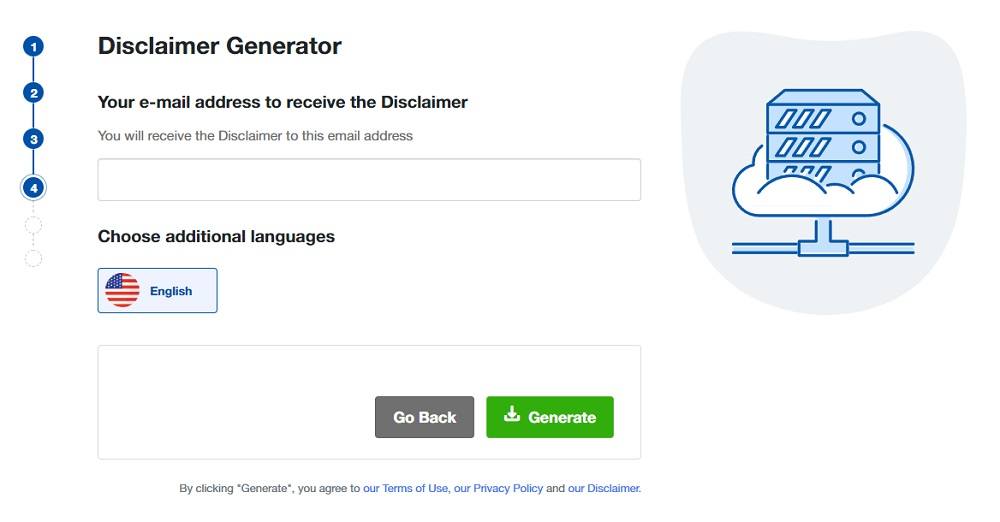
Done! You'll be able to instantly access and download your new Disclaimer.
- 1. Why are Blog Disclaimers Useful
- 2. How to Write a Disclaimer for Your Blog
- 2.1. How to Write an Affiliate Disclaimer
- 2.2. How to Write a Views Expressed Disclaimer
- 2.3. How to Write a No Responsibility Disclaimer
- 2.4. How to Write a Use at Your Own Risk Disclaimer
- 2.5. How to Write a Fair Use Disclaimer
- 2.6. How to Write a Copyright Disclaimer
- 3. Summary
Why are Blog Disclaimers Useful
Disclaimers are useful on blogs for a number of reasons. Depending on the nature of your blog, some disclaimers may be more useful than on other types of blogs. For example:
- If your blog offers medical information and advice, disclaimers can help you by limiting your liability for the medical information you offer.
- If you run a blog that uses a lot of custom artwork, a disclaimer can present copyright information and protect your rights to your artwork.
- If your blog uses affiliate links for users to make purchases through, an affiliate disclaimer (like the disclaimer for Amazon Associates) can let users know that you stand to gain financially if they click your links.
How to Write a Disclaimer for Your Blog

The specific language of your disclaimers will depend on what industry you're in and what type of blog you have, but here are a number of the most commonly seen and widely used blog disclaimers, along with examples and guidance on how to write each one.
Your blog may not need all of these, but chances are it will need at least a few.
How to Write an Affiliate Disclaimer

Affiliate disclaimers are a requirement of the Federal Trade Commission (FTC) in its Guides Concerning the Use of Endorsements and Testimonials in Advertising.
These guidelines require that if you receive any sort of compensation for using affiliate links, rankings, reviews or testimonials of products on your blog, you must disclose this to your users.
Basically, your readers need to know if you're getting compensated for recommending something to them. Even if you 100% stand behind the product and would recommend it anyway without receiving the compensation, your readers need to know about the compensation to help them make informed decisions and have transparency while reading your blog.
Here's how Simply Quinoa includes an Affiliate Disclaimer on its blog:
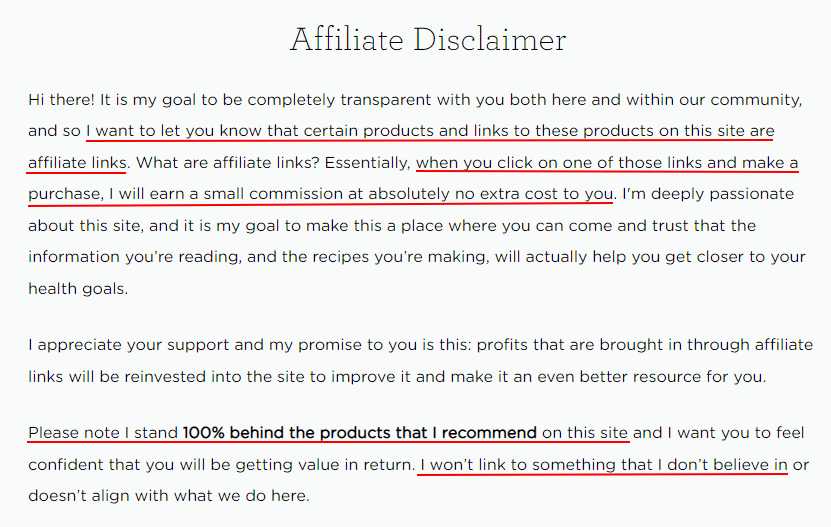
Readers are informed that affiliate links are used and that when a user clicks one of those links and makes a purchase, the blog owner makes a small commission.
Users are reminded that Simply Quinoa fully stands behind all of the products that are recommended. This lets users know that the products aren't just being recommended to make the blog owner money.
Spartan Traveler includes a similar affiliate disclaimer, letting users know that the blog owner will receive a bit of compensation when an affiliate link is clicked and a purchase made via the link.
The disclaimer lets users know that no products or services are recommended that aren't actually used by the blogger himself, and that nothing is recommended solely for profit.
This helps users have faith in the recommendations on the blog and see the affiliate links as fair rather than just a money-making thing.
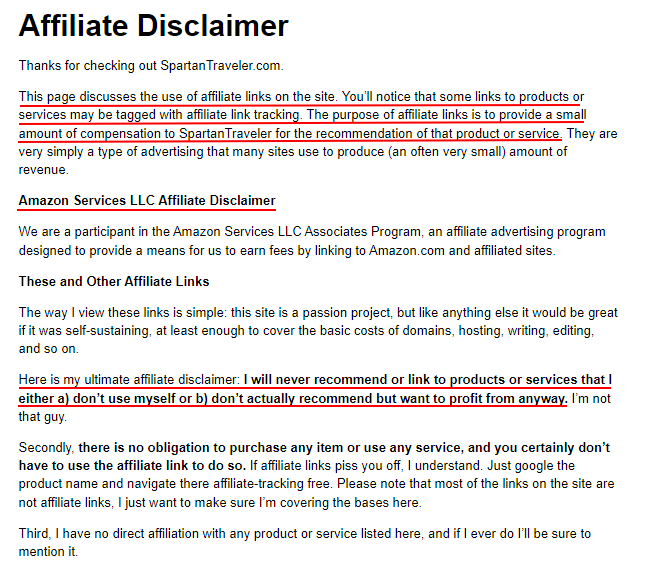
Note that both of these affiliate disclaimers are written almost like letters to the users. That's a common and effective way to approach this disclaimer since the point of it is to explain to users:
- That you use affiliate links,
- What affiliate links are, and
- That you are only recommending products you stand behind, profit or non-profit.
Using something in a letter format helps make a user more comfortable, adds some personality and personal connection to your blog, and is far more effective at conveying affiliate disclaimer information than something much more formal or full of legalese would be.
You can create your affiliate disclaimer any way you'd like, so long as you include the above bulleted information points. A letter style will work, as will a short paragraph covering just the pertinent information.
How to Write a Views Expressed Disclaimer

If your blog allows users to submit content, be it blog posts, news articles, or even just adding comments and reply to comments by others on blog content, you might want to consider a "Views Expressed" disclaimer, or "Opinion" disclaimer.
This type of disclaimer basically states that any views and opinions expressed on the blog belong solely to the original authors of the opinions and can't be attributed to you and your blog.
This is an important disclaimer for liability.
For example, if someone posts a defamatory comment on your blog, this disclaimer will keep you from being attributed to the comment and potentially being held legally liable for the defamation.
Here's an example of a basic but effective Views Expressed/Opinion Disclaimer from Gerweck.net.

When writing your Views Expressed disclaimer, make sure you let users know that any views and opinions expressed:
- Belong solely to the original author of the view/opinion, and
- Do not necessarily represent the views and opinions of your blog
How to Write a No Responsibility Disclaimer

A No Responsibility disclaimer lets your users know that you cannot be held responsible for different damages that may arise out of using your blog.
Some common damages that a No Responsibility addresses include the following:
- Any false, inaccurate or incomplete information on the blog
- Damages arising from technical issues or the blog being temporarily unavailable
- Damages arising from clicking on third-party links
- Damages that may arise from using the blog
Depending on the nature of your blog, you may need to disclaim responsibility for other potential damages such as for damages arising out of charging a user for a purchase.
Let's look at a No Responsibility Disclaimer, or Disclaimer of Liability, from BCS:
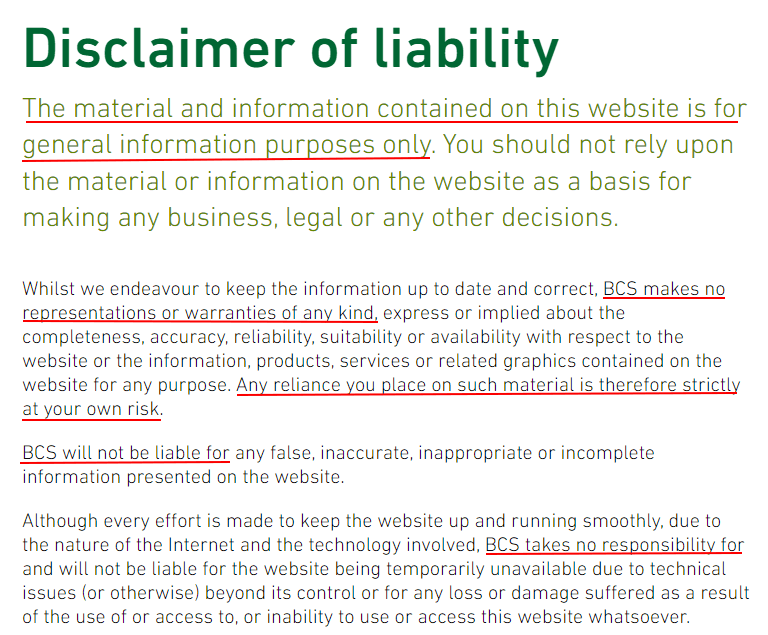
Note how it states that the company will not be liable for things such as how someone uses the site's information, for any false, inaccurate or inappropriate information on the website, nor for technical issues that may arise.
To write your own No Responsibility Disclaimer, let users know that you will not be held liable for damages arising from things such as:
- Any false, inaccurate or incomplete information on your blog
- Damages arising from technical issues or your blog being temporarily unavailable
- Damages arising from clicking on or relying on third-party links
- General damages that may arise from using the blog
Include any other additional sections that are relevant to your own specific blog that you may wish to disclaim liability for.
How to Write a Use at Your Own Risk Disclaimer

A Use at Your Own Risk disclaimer is seen commonly on blogs that offer medical, health, legal, exercise or DIY-type advice and information.
This disclaimer lets users know that if they use any of the information on the blog, they're using it at their own risk - meaning, they cannot hold the blog owner or writer responsible for any issues that result from using the information found in the blog.
Use at Your Own Risk disclaimers are typically very short and to the point, letting users know that if you use any blog information, you're doing so at your own risk.
Here's an example of a standard clause like this that addresses using an exercise program that's included on a website. Users are also told that it's their "responsibility to evaluate your own medical and physical condition, or that of your clients, and to independently determine whether to perform, use or adapt any of the information or content on this website."

This can be tailored to your own industry if it isn't exercising/fitness.
To write your Use at Your Own Risk disclaimer:
- Let your users know that by using any of the information or content available on your website, they are doing so at their own risk.
- State that the user assumes the risk of any resulting injuries or damages and that you cannot be held liable.
How to Write a Fair Use Disclaimer

In the U.S., section 107 of the Copyright Act of 1976 allows some copyrighted material to be used for purposes such as teaching, education, research and a few other similar uses.
If your blog uses material under this fair use statute, you need to disclaim this to your users so they know you aren't infringing on copyright laws of the fair use material.
The Syracuse Journal of Science and Technology Law includes a "Fair Use Act" Disclaimer that lets users know that some educational-use materials are provided under the Copyright Act of 1976. Fair use is defined for users.
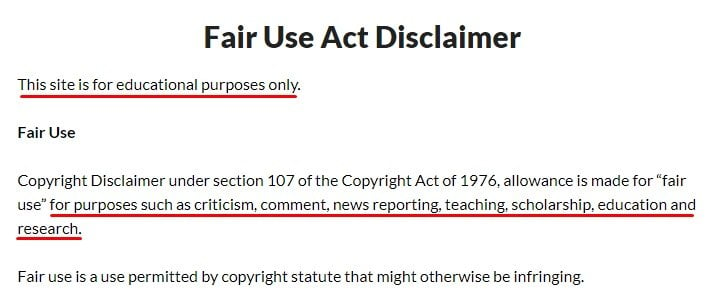
When creating your own Fair Use disclaimer, you will need to include the following:
- For businesses in the U.S.: Include a reference to "Section 107 of the Copyright Act of 1976" and
- What use the materials you're using under that statute fall under (criticism, comment, news reporting, teaching, scholarship, education, research or another accepted fair use)
Including a link to the statute and/or a definition of "Fair Use" like the examples above is helpful to your users, but is not legally required.
How to Write a Copyright Disclaimer

Even without a copyright disclaimer in place, you'll still have legal recourse in the event of copyright infringement.
However, including a copyright disclaimer will help make sure that others are aware of your copyright, and may make it more difficult for someone who infringes your rights to claim that it was done so innocently.
A Copyright Disclaimer can be short, like this example:

This simple notice and reservation of rights is effective as a copyright disclaimer.
In that example as well as the following, your specific business name and information would go in the greyed-out spaces.
You can choose to make a more robust Copyright Disclaimer if you want to, such as this one:
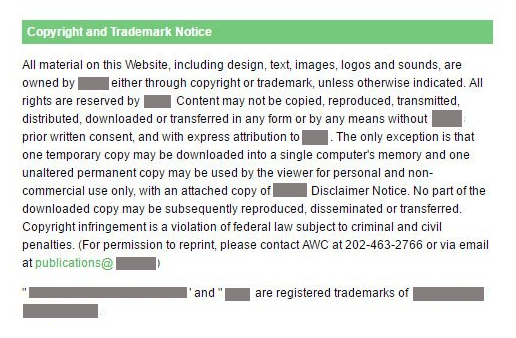
This Copyright Disclaimer/Notice doesn't stop after letting users know that all material is owned by a business and that all rights are reserved by that business. It continues on to say that "content may not be copied, reproduced, transmitted, distributed, downloaded or transferred in any form or by any means without [the business] prior written consent, and without express attribution to [the business]."
This version of the disclaimr does include one exception to its reservation of copyright, which is that "one temporary copy may be downloaded into a single computer's memory and one unaltered permanent copy may be used by the viewer for personal and non-commercial use only, with an attached copy of [the business] Disclaimer Notice."
This shows how flexible your Copyright Disclaimer can be with how you reserve your rights and how much of them you reserve.
To write your own Copyright disclaimer:
- State that your content belongs to you,
- Let users know that they cannot copy, reproduce, transmit, distribute, download or transfer your content. This list may be larger or smaller in scope than your blog may warrant, but it's a good starting point and has boilerplate language that's commonly used.
- You can optionally include contact information where users can contact you if they're aware of a copyright infringement or have questions about proper use of your content.
Summary
There are a lot of other useful disclaimers for blogs, but these are some of the most common, versatile and important clauses that you should include in your blog.
When deciding which disclaimers to display on your blog, consider your blog's content and the industry you're in. This will help you determine what exactly you need or want to disclaim.
After you have your disclaimers drafted, display them in an appropriate place on your blog so that the most people can see them easily when viewing your content.

Comprehensive compliance starts with a Privacy Policy.
Comply with the law with our agreements, policies, and consent banners. Everything is included.
